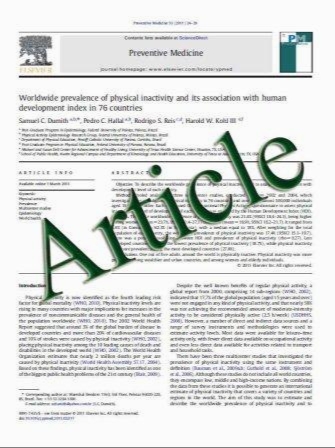The effect of diode laser irradiation on dentin as a preventive measure against dental erosion: an in vitro study
- نوع فایل : کتاب
- زبان : انگلیسی
- مؤلف : Mary A. S. de-Melo & Vanara F. Passos & Jose J. Alves & Eduardo B. Barros & Sérgio L. Santiago & Lidiany K. A. Rodrigues
- چاپ و سال / کشور: 2011
Description
Increasing rates of non-carious cervical lesions due to dental erosion, exposure of dentinal tubules, and hypersensitivity to environmental stimuli have led to the development of new prevention strategies. This study evaluated the effects of a low-intensity diode laser (ë = 808 nm) on the dentinal chemical composition and prevention of demineralization. In addition, the study monitored temperature changes during the course of irradiation. Forty dentin specimens were randomly allocated into four groups (n = 10): G1 – No treatment (control), G2 – irradiated with 15 J/cm2, G3 – irradiated with 30 J/cm2, and G4 – irradiated with 60 J/cm2. Each specimen was partially covered with nail varnish, treated according to the group irradiation levels, and exposed to an erosive challenge (1.0 M hydrochloric acid) for 5 min. Afterwards, dentin loss was profilometrically analyzed and examined by scanning electron microscopy (SEM) combined with energy dispersive X-ray (EDX). Intrapulpal temperatures were measured during the dentin irradiation. One-way ANOVA and Tukey tests (p < 0.05) were performed to assess differences. For all irradiated groups, intrapulpal temperature changes were less than 3°C. The G2 group showed statistically significant differences when compared to the other groups, representing the lowest temperature increase. A quantitative element analysis via EDX did not significantly differ (p < 0.05) for Ca, P, F, O, or C between the four groups when measured after irradiation/erosion. The mean wear rates (± SD, ىm) were 35.66 ± 7.28; 40.70 ± 5.03; 38.17 ± 10.81 and 25.25 ± 6.87 for G1–G4, respectively. The G4 group statistically differed from all other groups representing the lowest wear rate. These results suggest that dentin irradiation, using a diode laser with levels set at 60 J/cm2, may induce inhibitory effects on root dentin demineralization without causing any harmful thermal effects. However, the exact mechanism of the action of the laser remains unclear.
Lasers Med Sci (2011) 26:615–621 DOI 10.1007/s10103-010-0865-y Received: 16 February 2010 / Accepted: 1 November 2010 / Published online: 20 November 2010


